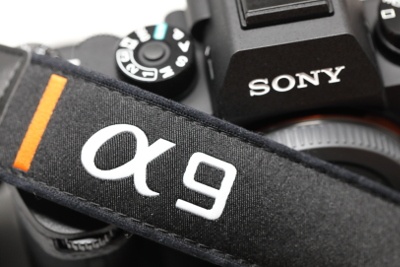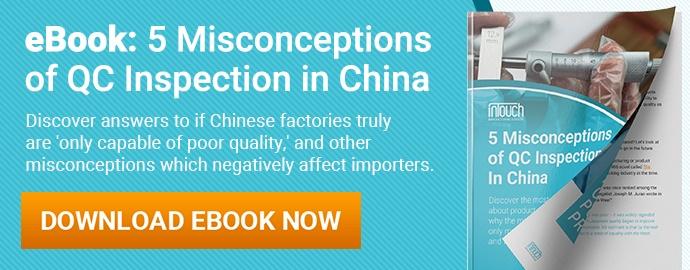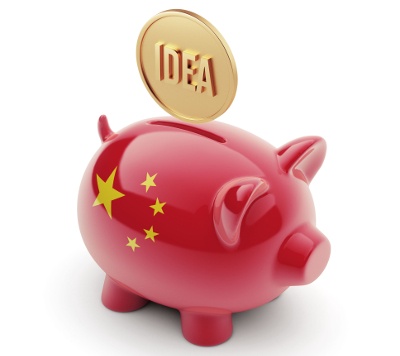Each Sunday, we publish a list of top articles and other content related to manufacturing in areas like quality control, product development, supply chain management, sourcing, auditing and law.
1. China: Where Christmas is “made”
Christmas is nearly here. While many people believe that Santa Claus comes from the North Pole, he actually might originate elsewhere: China.
 Dancing Santas? Santa Claus tree toppers? Santa wine stoppers? If the product has anything to do with Santa Claus or Christmas in general, it was probably made in China’s “Christmas village”.
Dancing Santas? Santa Claus tree toppers? Santa wine stoppers? If the product has anything to do with Santa Claus or Christmas in general, it was probably made in China’s “Christmas village”.
Yiwu, located in Zhejiang Province, is responsible for nearly two-thirds of Christmas decorations consumed around the world. This featured article mentions how Yiwu produced “$3 billion worth of Christmas products” – that’s a LOT of Christmas cheer.
It seems like Santa’s workshop might outsource some of its work to Yiwu. And the benefit of that is Yiwu’s involvement in China’s “One Belt, One Road” initiative. The goods made in Yiwu are able to travel along the ancient Silk Road and offload in Prague, Madrid, Tehran and London.
Are you curious about where a great deal of Christmas-themed products originate from? Check out the featured article in the link below to read more about this topic and view a video about Yiwu:
Inside China's 'Christmas Village,' Where the World's Decorations Come from – Beimeng Fu, ABC News
2. What’s on the horizon for manufacturing in 2018 and beyond
Wow! Like me, you might find yourself saying, “2017 went by really fast.” 2017 is nearing its end, but 2018 is just about to start. And that means a changing manufacturing landscape.
One way to prepare for the future of manufacturing is to absorb insights from analysts and those in the industry. This featured article lists ten major predictions for manufacturing in 2018 and is chalk full of knowledge about the technology that will influence the sector. Some samples are listed below:
- One-third of all manufacturing supply chains will use analytics-driven cognitive capabilities by the end of 2020
- 80 percent of supply chain interactions will occur via cloud-based commerce networks by 2020
- 50 percent of manufacturers will collaborate directly with customers and consumers about product designs via crowdsourcing, virtual reality and product visualization
- 60 percent of the top manufacturers will depend on digital platforms
These predictions come from the IDC FutureScape: Worldwide Manufacturing Predictions 2018 report. A major aspect of the predictions mentioned in the report and featured article are the impending digitization of industry, technologies like 3D printing and augmented reality, and others.
How do you think these 2018 manufacturing predictions compare to the predicted manufacturing trends in 2017 (see #2)? Let us know in the comments section at the end of this post.
To read more about the manufacturing predictions for 2018, check out the compre
hensive featured article in the link below:
Top 10 Predictions for Global Manufacturing in 2018: IDC – Editorial Staff, IndustryWeek
3. China’s transformation from sweatshop to innovator
“Made in China” carries a negative connotation with some consumers around the globe. While a handful of products made in China might be substandard (sometimes for reasons like quality fade), not all Chinese goods are shoddy. In fact, this is a common misconception about quality control in China.
Some Chinese factories continue to make cheap products and contribute to the idea of poor, “Made in China” quality. But this isn’t the case entirely. Chinese factories are capable of making drones, smartphones and many other complicated products that aren’t cheap junk.
China is also pouring substantial money into efforts like Made in China 2025 to upgrade the country’s manufacturing capabilities. This featured article also mentions the emergence of hi-tech development areas in provinces across the country, each with aims of developing advanced manufacturers and businesses.
These efforts tie into a greater push to move China from just being a country full of contract manufacturers to one that innovates on its own and can compete anywhere.
The president of a pharmaceutical company mentioned in this article believes that,
China has used cheap manufacturing and copying for a first development stage, but companies find that this model doesn’t work anymore. Innovation for us is survival.
Taking contract orders for cheap goods is only sustainable for so long. Some companies might be able to survive on this for a few more years, but to make it in the long run, innovation is essential. And that’s why factories are scrambling to develop into something greater than just a workhorse for foreign importers and domestic buyers.
Curious about the transformation of China’s manufacturing and innovation? Check out this full article to learn more:
From Made in China to Created in China: How Nation Turned Itself from World’s Sweatshop to Global Innovator in Just One Decade – Zigor Aldama, South China Morning Post
4. Superbacteria gobbling up pollution
It’s no secret that manufacturing isn’t the cleanest endeavor. Places like Xintang in Guangdong Province, China, are home to super-polluted waterways after years of dumping denim-production wastewater into them. And as this report from the United Nations makes clear, water pollution has a major effect on water availability, which in turn affects water scarcity.
Yet in the face of such a gigantic crisis, concerned individuals are looking for ways to lessen the pollution emitted by factories.
This featured article mentions how researchers in Hong Kong are exploring how to use bacteria to treat wastewater discharged by clothing manufacturers. The garment industry in China releases an astounding 3 billion tons of wastewater each year, which makes the country a prime place to start experimenting with treatment options.
According to the article,
Using bacteria instead of chemicals to digest organic compounds can cut the amount of waste sludge generated by as much as 80 percent and enables 100 percent of the water to be recycled in the plant.
On the path to more sustainable manufacturing in China (see #2), these sorts of improvements are sorely needed.
Aside from concerns for the environment, treating wastewater is a way for manufacturers to avoid the wrath of Beijing’s crackdown on environmental abuses and that of local “river chiefs” (see #3). Treating the wastewater is also a great way to make sure dogs that might bathe in the water don’t turn blue (see #4).
Want to learn more about how superbacteria might one day consume wastewater for a greener future? Check out the full article in the link below for more information:
Superbacteria Could Soon Be Eating China's Factory Waste – Daniela Wei and Corinne Gretler, Bloomberg
5. New confidence in Thailand for sophisticated manufacturing
Do you believe factories in Thailand can manufacture quality electronics? If not, then you’ll have to check out this featured article.
 Sony’s Alpha A9 cameras, while still designed in Japan, are manufactured in Thailand. Sony began manufacturing in Thailand in 2003. Since then, the efficiency and capabilities of their Thai workforce have gradually improved, which has resulted in Sony deeming the country a viable option for sophisticated electronics manufacturing.
Sony’s Alpha A9 cameras, while still designed in Japan, are manufactured in Thailand. Sony began manufacturing in Thailand in 2003. Since then, the efficiency and capabilities of their Thai workforce have gradually improved, which has resulted in Sony deeming the country a viable option for sophisticated electronics manufacturing.
One risk Thailand faces is rainstorms, which can result in severe flooding. Thailand experienced major flooding in 2011, which prompted Sony to move operations to the city of Chonburi. The benefit of this location for importers is that [emphasis added],
With good air and sea transport links, Chonburi is in an ideal location to both receive parts and export finished products quickly. Factor in a skilled labor force that costs considerably less than in Japan, and it's easy to see the appeal.
In addition to having well-located operations, Japanese management of the Thai factories means manufacturing philosophies like kaizen have been implemented. For other importers interested in Thai manufacturing, they might be able to impart different meaningful philosophies, like Lean manufacturing or Six Sigma, to benefit factories there and see greater efficiency in their ventures.
Thailand, like several other countries in Asia, is a viable alternative to sourcing from China, which remains an ever-popular option for importers and their manufacturing needs.
If Sony trusts Thailand for its complex manufacturing, do you as well? Let us know in the comments below!
To find out more about Sony manufacturing in Thailand, check out the featured article in the link below:
Behind the Scenes on the Sony Alpha A9 Production Line – Phil Hall, TechRadar
We’re constantly scanning the web for top manufacturing stories and news. If you’d like to submit an article for consideration for our weekly Best in Manufacturing, send us a message and let us know.








